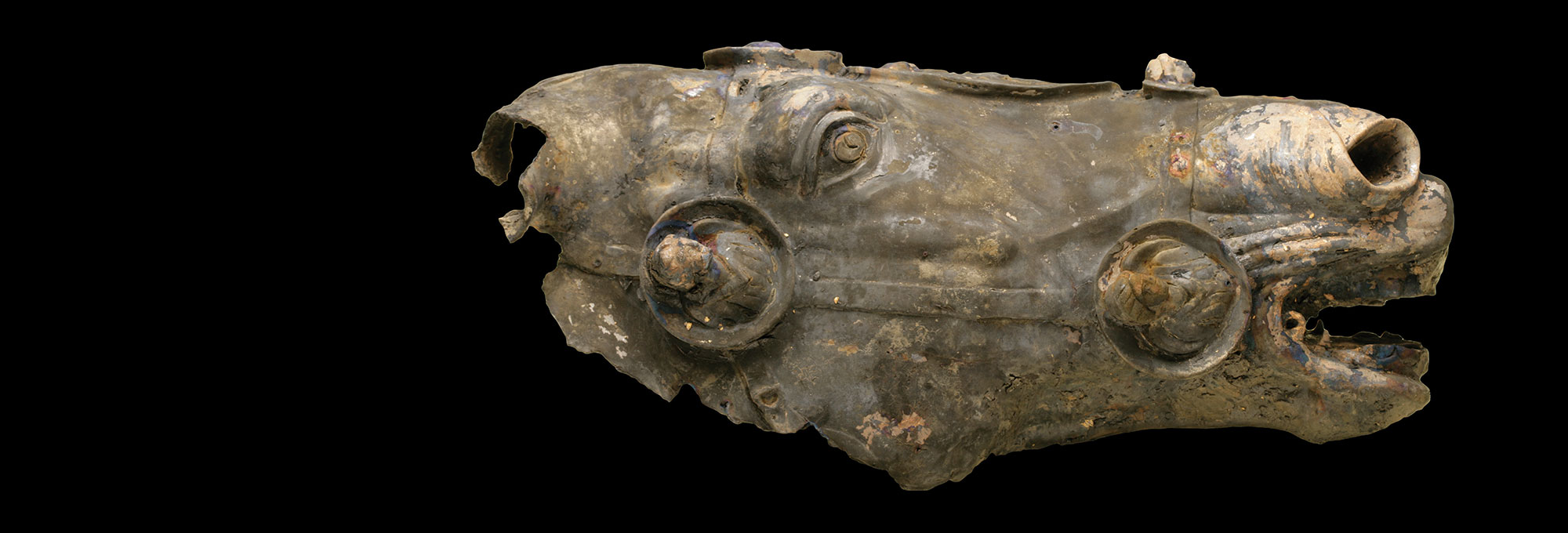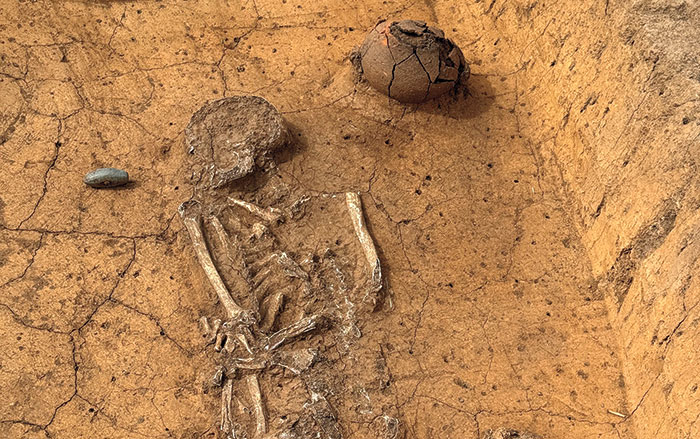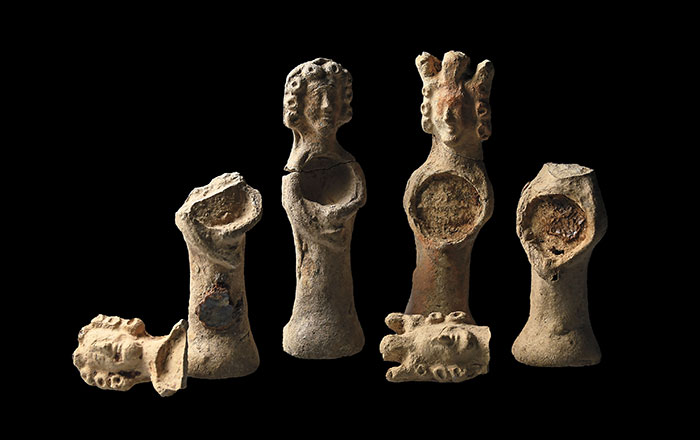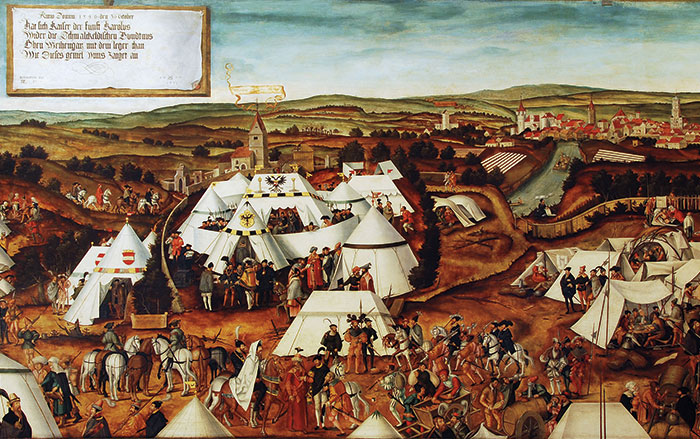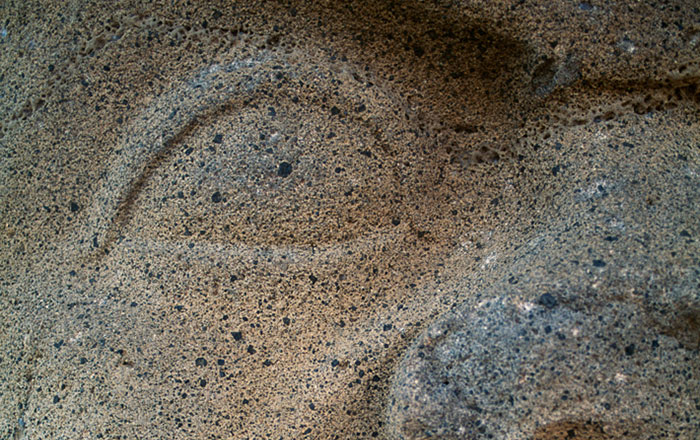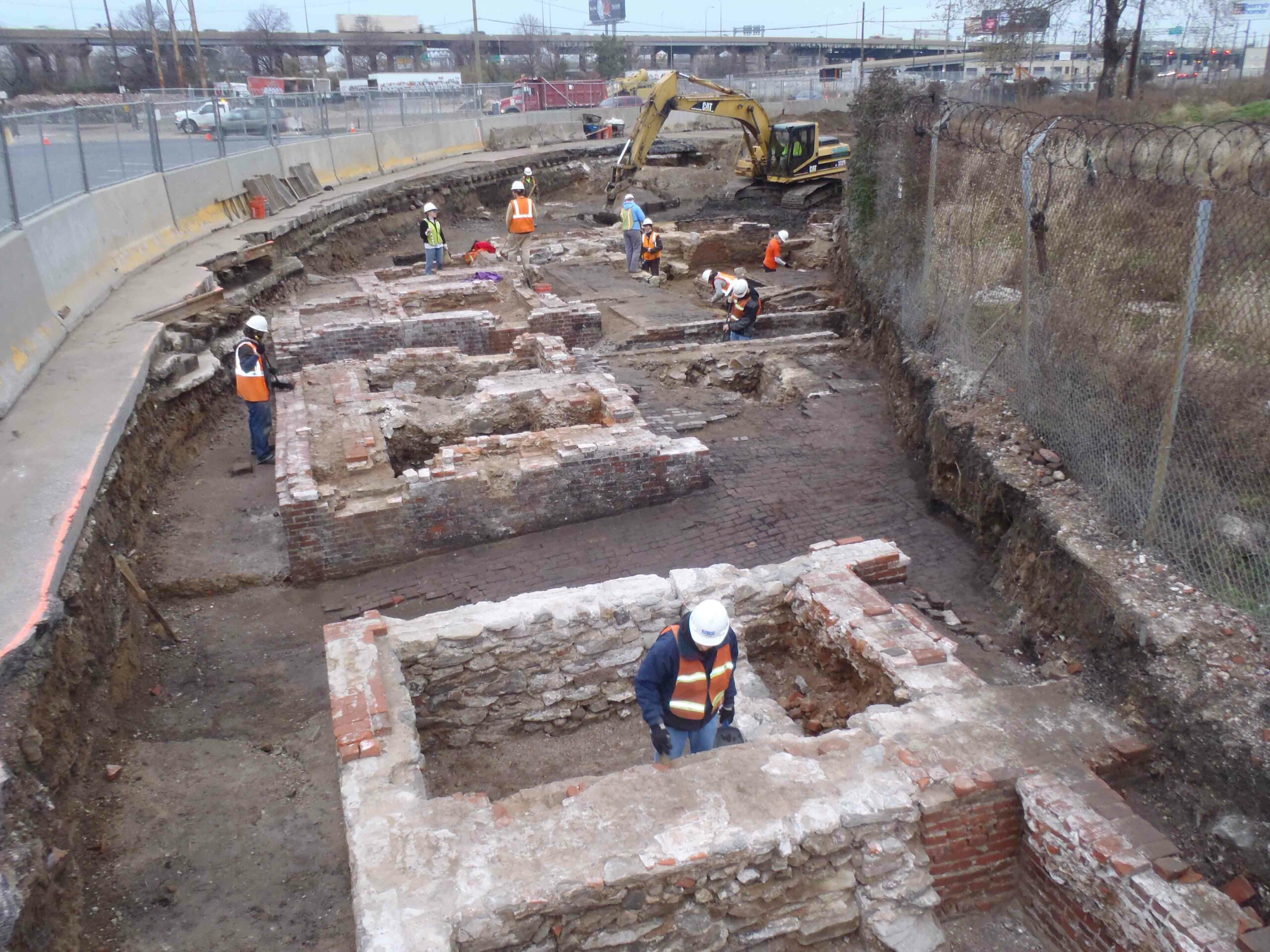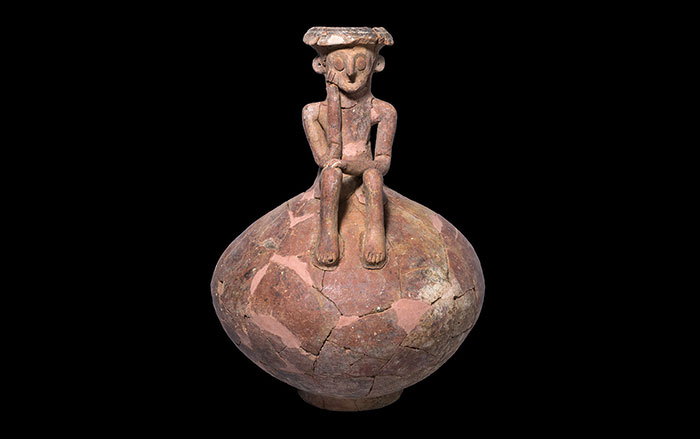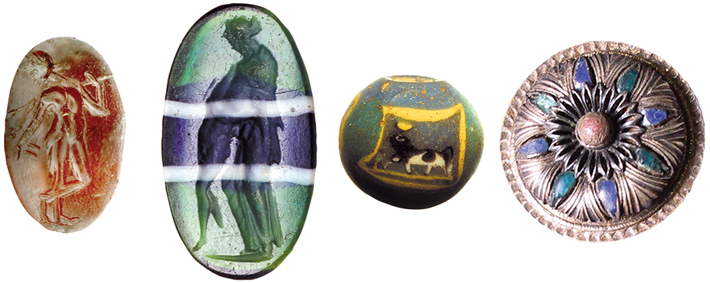
The oft-told tale of the Roman Empire’s expansion is one of violent conquest—its ever-widening borders pushed forward at sword point by Roman legions. Some of the bloodiest military engagements pitted Rome against the inhabitants of Germania, who are described by contemporary sources of the time as a loose confederation of uncivilized, quarrelsome, warlike, ferocious tribes to the north. The conventional wisdom goes that after a decades-long attempt to conquer the region east of the Rhine River finally failed in A.D. 9, Rome gave up on the Germans entirely. But what if there’s more to it than that?
In the 1980s, the chance discovery of sherds of Roman-style pottery on a farm in the Lahn Valley near Frankfurt led archaeologists and historians at the German Archaeological Institute’s Romano-Germanic Commission to begin excavations. What they uncovered was a Roman site they call Waldgirmes, after a nearby modern town. The ancient name is unknown. When German Archaeological Institute archaeologist Gabriele Rasbach started working at the site in 1993, she and her colleagues assumed they had found a military installation. Ground-penetrating radar surveys revealed carefully planned streets, the foundations of wooden buildings, and postholes that are evidence of 10-foot-tall timber walls. “It was clearly just like a Roman military camp,” says archaeologist Siegmar von Schnurbein, who was the director of the commission during the Waldgirmes excavation.
Although the discoveries were exciting, they were not necessarily surprising. The Roman army, fresh from its conquest of Gaul and bent on further dominion, had been active all across Germany, and the distinctive straight lines of Roman military camps are familiar to German archaeologists. “The military interpretation here is so strong that at first we didn’t think it could be anything else,” Rasbach says. As the Waldgirmes excavations progressed, though, archaeologists began to question their initial assumptions. “We found buildings that had nothing to do with the military,” says von Schnurbein, “and we still haven’t found anything resembling a barracks.”
The excavators began to realize that the site might be something else entirely. As they dug over the course of nearly 15 years, they uncovered specialty workshops for ceramics and smithing, and administrative buildings made of local stone and timber from the thick forests nearby. They found evidence of some Roman-style residences with open porticos in front, unlike the longhouse-style buildings preferred by the locals, as well as other hallmarks of a typical Roman town, including a central public space, or forum, and a large administrative building called a basilica. “There’s actually not a single military building inside the walls,” says Rasbach. What they had uncovered was a carefully planned civilian settlement.
Artifacts from the site further reinforced the identification of Waldgirmes as a town. Of the hundreds of objects archaeologists have excavated, just five are military in nature, including a few broken spear points and shield nails that could be associated with the army. When taken together, the artifacts and structures persuaded researchers that they were dealing with an entirely novel phenomenon: a new Roman city established from scratch in the middle of a potential province. From the forum to workshops, houses, and water and sewage systems—from which sections of lead pipe have been recovered—to its sturdy outer walls enclosing 20 acres, Waldgirmes had everything a provincial capital needed. “It’s the first time we can see how Rome founded a city,” says von Schnurbein. “You can’t see that anywhere else.”
Because the site was built predominantly of wood, archaeologists have been able to establish precise dates using dendrochronology, which uses tree rings as a time stamp. They determined that construction at Waldgirmes began around 4 B.C., not long after Roman troops reached the Elbe River, pushing the empire’s range deep into Germany. Waldgirmes’ architecture and the absence of a military presence suggest a relationship between Romans and Germans that runs against both the ancient and modern versions of the accepted story. “The fact that a city was founded in the Lahn Valley without a major military presence means there was a different political situation in the region,” von Schnurbein says—that is, different from what most historians have assumed. He concludes, “The Romans thought the Germans were loyal enough that they could build a civilian settlement here.”
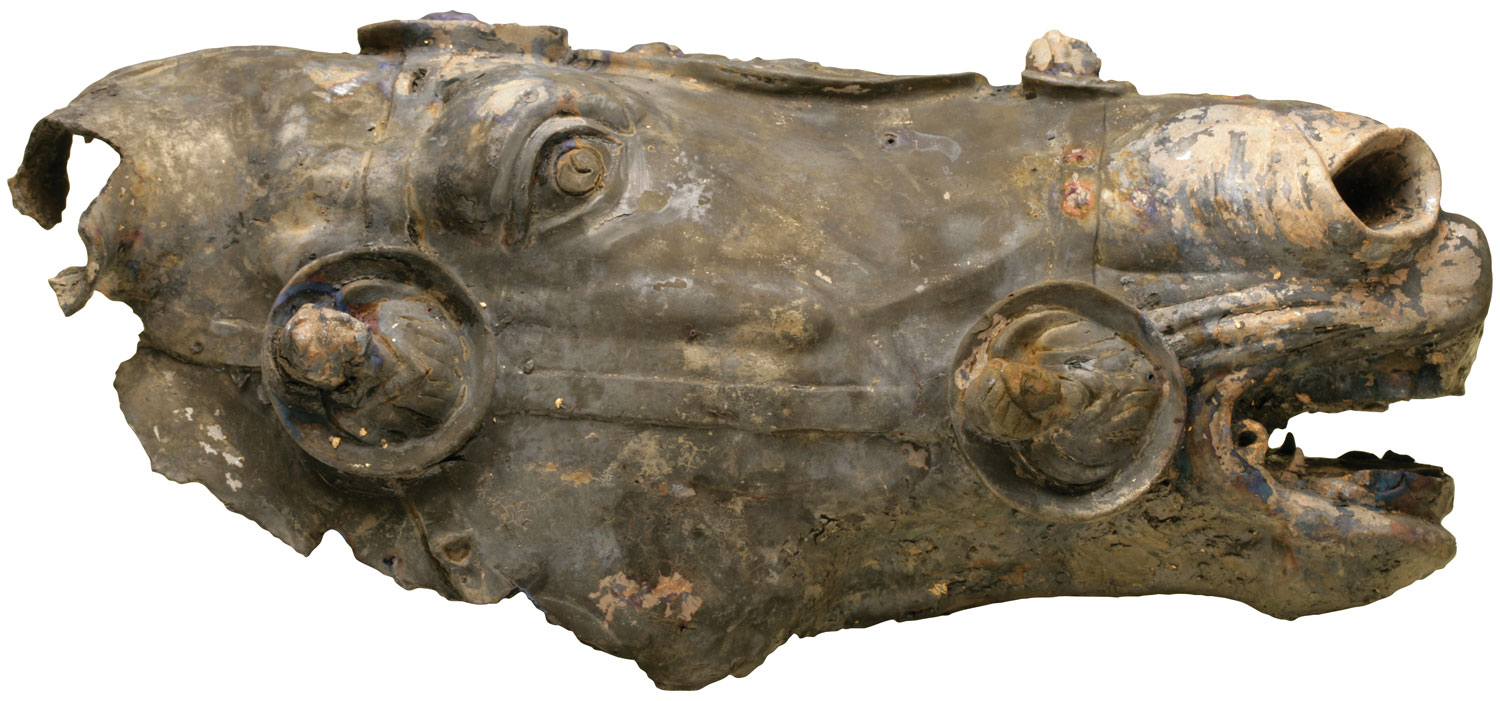
The Romans’ motivation in establishing Waldgirmes, at least at first, may have been trade. Ample pottery fragments provide evidence of relationships with provinces of the Roman Empire. The majority of the pottery is turned on potter’s wheels in the Roman style, and was probably imported from Gaul or Roman settlements north of the Alps. But 18 percent of the broken pots were local German ware, suggesting that Waldgirmes’ residents also traded with their barbarian neighbors. Ordinarily, at Roman military sites in Germany, local pottery makes up a mere tenth of a percent of the total. In addition to ceramics, silver pins and glass beads uncovered at the site might have been sold by Roman merchants who brought them from home. But von Schnurbein believes relations might have encompassed more than trade. “There’s plenty of evidence Germans might have lived in Waldgirmes,” he says, citing typical German jewelry found there and variations in house foundation styles at the site, reflecting both Roman and German styles. “It’s not just trade goods and ceramics, but signs the locals were at home there, or lived right nearby and had intensive contact.”
According to Rasbach, the most intriguing finds were fragments of bronze that turned up as excavators dug deeper into the field. The first, just half an inch long, was discovered in 1994. Over the years, dozens more followed—some tiny and some big enough to be recognizable as belonging to a large sculpture. “At first, we thought it was bronze recycled from somewhere else,” Rasbach says, “but we kept finding parts of a statue—a fragment of a human foot, and then a section of horse armor.” Eventually they had more than 160 pieces of metal, weighing 48.5 pounds in all. Most were tiny splinters, but the largest was the size of a small paperback book. As the team excavated the settlement’s forum, where the majority of the bronze was recovered, the truth behind the fragments began to become clearer. In the middle of this public square, they found the shattered remnants of five limestone pediments in corresponding nine-by-six-foot pits. The pediments’ dimensions made them large enough to showcase life-size statues of mounted riders, and the stone had been prepared with the holes and sockets Romans sculptors usually used to mount such statuary. The pediments were a logistical accomplishment in and of themselves. “The limestone was from France, brought to Wald-girmes by river,” Rasbach says. Rasbach and her team thought the chances of recovering one of the statues intact were extremely slim. In the ancient world, metal was an especially valuable commodity. A large bronze statue would most likely have been smashed and recycled into weapons or armor.
In 2009, the team decided to excavate a well that had been discovered in the center of the settlement. It was to be the project’s last major phase. The well’s shaft was an estimated 20 feet deep, and, in order to prevent it from collapsing as they dug, they came at the structure from the side by creating a downward-slanting pit. When they reached what they thought was the bottom, it turned out the well was significantly deeper than they had envisaged. Working far into autumn, the team kept digging until, finally, nearly 33 feet below the surface, they found a 265-gallon, 63-by-39-inch wooden wine cask, placed there two millennia ago to hold the bottom of the well open. The barrel’s wooden slats had been preserved by the cold, wet, anaerobic conditions below the surface. The cask was packed like a junk shop, its contents a reflection of the settlement’s last days. At the top was a bronze shoe, apparently a fragment of one of the mounted statues. Fence posts, a shovel, an ox yoke, a well cover, wooden buckets, tool handles, and sticks had also been tossed into the well, along with eight heavy millstones. They, like the limestone pediments, had been imported from hundreds of miles away, this time from near modern-day Aachen to the northwest. “The millstones were virtually unused,” says Rasbach, evidence of the settlement’s short lifespan.
Rasbach and her team were astounded to find a life-size bronze horse’s head wedged underneath the millstones. As excavators worked, the copper salts in the bronze reacted with air for the first time in nearly 2,000 years and briefly turned the metal purple. The head was barely dented, despite the millstones that had sat on top of it. “The well must have had water in it that let the millstones float down gently,” Rasbach says. The head had probably been part of a life-size sculpture of a mounted emperor that stood as the centerpiece of the settlement’s forum on top of one of the five limestone pedestals.
Based on the horse head’s weight, archaeologists estimate the complete statue weighed nearly 900 pounds. Subsequent restoration work revealed that it was entirely covered in gold leaf, which must have made a tremendous impression on anyone who saw it. According to von Schnurbein, the presence of such imposing statues is another clue to the settlement’s intended role as a provincial capital. To the Romans, images, particularly imperial ones, were more than symbols. “A picture or image of the emperor meant something very different than it would today. It meant he was actually there, actually present,” says von Schnurbein. “It shows Rome was willing to go all out to demonstrate that Rome rules here. Augustus, who was emperor at the time, rules here.”
The situation in Waldgirmes must have seemed quite stable, says archaeologist Salvatore Ortisi of the University of Osnabrück. “You can see the area was on its way to becoming a regular Roman province,” he says. “The Romans must have felt in control of the area to build something like this settlement.” Cooperation and diplomacy must have seemed the right road to take.
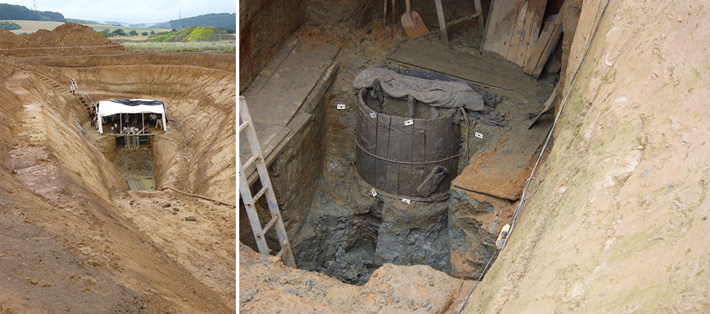
Whatever sense of security and first steps toward peaceful relations with the German tribes the Romans may have felt they achieved when they settled Waldgirmes, that state of affairs was short-lived, their sense of control badly misplaced. Evidence suggests that something significant happened at Waldgirmes in the fall or winter of A.D. 9, a date that coincides with a German battle fought 155 miles to the north. Now known as the Battle of the Teutoburg Forest, the clash was the Roman Empire’s most humiliating defeat. In response to raids by rebellious German tribes, the ambitious and arrogant Roman general Quintilius Varus, fresh from crushing a rebellion in Judea, led three legions north to the forests of Germany. An ambush by well-organized German warriors resulted in the total annihilation of Varus’ forces in a swamp near the modern city of Osnabrück. The 15,000-strong army’s shocking defeat at the hands of barbarians threw the empire into a crisis of confidence. It also seems to have marked the beginning of the end for Waldgirmes. Tree-ring analysis of a ladder found tossed in the well, for example, shows that it was made in the fall or winter of A.D. 9. Says Rasbach, “That we can discuss, almost to the month, when all this happened is amazing.”
Rasbach thinks the settlement’s final days might have gone something like this: After word of the Teutoburg slaughter reached Waldgirmes, the hundreds of Romans there, who were mostly craftsmen, traders, and administrators, rather than armed legionaries, realized Germany was no longer friendly territory.
What happened next is murky and a number of interpretations are possible. One thing, however, is quite clear—the forum’s magnificent statues were pulled from their pedestals and violently dismantled, the emperor’s image smashed, and the horse’s head tossed into the well. Rasbach and her collaborators think, because bits of bronze statue were found underneath later construction, that the destruction of the statues might have been a dramatic effort to placate Wald-girmes’ German neighbors and allow the settlement to survive deep in suddenly hostile territory. Von Schnurbein, on the other hand, thinks that the horse head may have been spared because of its symbolic importance to the locals. “In Germanic areas, there’s evidence for horse sacrifices, especially in bogs,” he says. “The destruction was a major symbolic act—30 pounds of valuable bronze was tossed in the water, and then covered with millstones.” The golden horse, in other words, may have stood in for a real horse in a ritual water sacrifice.
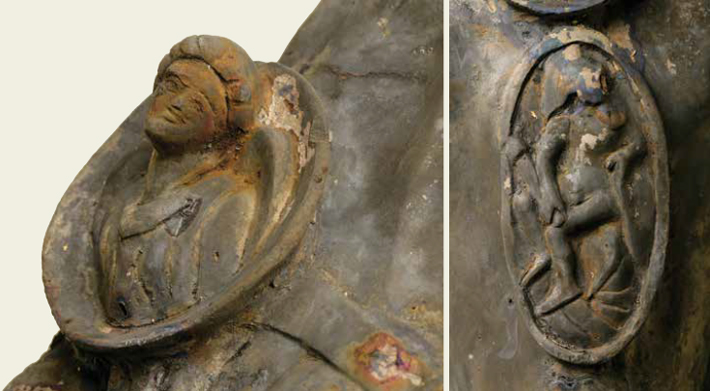
The Teutoburg slaughter sealed the settlement’s fate. Archaeologists have found no coins dated after A.D. 9, and within a few years after the battle, Waldgirmes’ Roman residents seem to have packed up and left, abandoning the city, its forum, and its shattered statues. “There are no mass graves or signs of fighting in the streets,” says Ortisi. “From what we can tell, the evacuation was planned.”
Ultimately, Waldgirmes was put to the torch. Rasbach thinks the departing Romans incinerated the settlement in order to leave nothing behind for vengeful German tribesmen. “In the final fire, everything was wiped out, ground down to the earth,” Rasbach says. “You can see burning along the entire wall.”
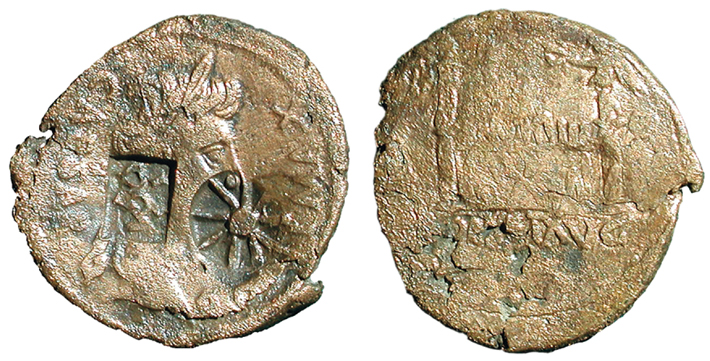
The German victory over Varus ended Roman expansion east of the Rhine for good. After the battle, the Romans abandoned the region, pulling troops back to the Rhine and Danube Rivers. The Battle of the Teutoburg Forest and its aftermath are amply documented. Even the reaction of the emperor Augustus, said to have cried “Varus, give me back my legions!” when he received news of the defeat, is recorded in the ancient Roman historian Suetonius’ Lives of the Caesars. Yet there are no direct mentions of Waldgirmes in Roman histories. Perhaps the failure to make Germania a new province was such a political embarrassment that all mention of the settlement was wiped from the history books. Or maybe written records of the outpost were lost, leaving historians a far more martial impression of Rome’s attitude toward its barbarian neighbors to the north.
Von Schnurbein, however, says careful readers of the classics might see a hint of Waldgirmes’ existence in the works of Cassius Dio, a Greek chronicler who wrote around A.D. 200: “The Romans were holding portions of [Germania]...and soldiers of theirs were wintering there and cities were being founded. The barbarians were adapting themselves to Roman ways, were becoming accustomed to hold markets, and were meeting in peaceful assemblages.”
As German archaeologists excavated military camp after military camp in the twentieth century, Cassius Dio’s version of events—particularly the idea that cities were being founded—was dismissed as wishful thinking or anti-Varus propaganda designed to place all the blame for the loss of a once-promising province at the general’s feet. “Everyone assumed Cassius Dio was exaggerating,” von Schnurbein says, “but Waldgirmes shows that, despite what the historical sources say, the Romans were building cities in Germania.”


